WHAT HAS BEEN DONE WILL BE DONE AGAIN
Nothing Lasts Forever But the Earth and Sky
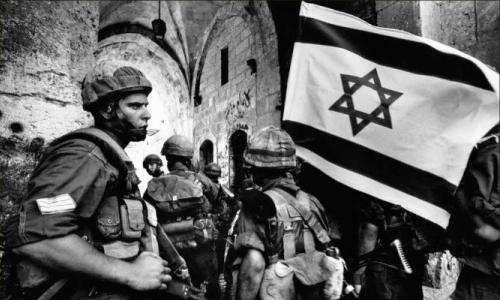
Consider the immense changes during the lifetime of this one man. In the world where he took his first breath Indians were still a problem for America. Geronimo, the last of the great Apache chiefs, had surrendered but two years earlier. Two years later, the Ghost Dance offered to the tribes one last breath of the free life their fathers had known, only to be extinguished under the vengeful guns of the Seventh Cavalry at Wounded Knee. In that era there was no Israel, no Poland, no Albania, and no Iraq. The United States was ten years away from joining the Great Powers, a status America would gain in 1898 through the mercy killing of Spain’s empire and the acquisition of Puerto Rico, Guam, the Philippines, and a controlling interest in Cuba. In that world a handful of men in Berlin or Paris or London could decide the fate of the entire world with no regard for the religions, ethnicities, histories, and preferences of millions of darker skinned peoples in the “barbaric” and “uncivilized” regions of Africa, Asia, and the Pacific. Superior European wealth, technology, and religion, demonstrated in lopsided victories at places like Omdurman, Rourke’s Drift, and Beijing, made it possible for Europe and her offspring to take up the “White Man’s Burden” of bringing civilization to the globe – and in the process enrich themselves at the natives’ expense. Nationalism was an important topic for Europe’s ethnic groups seeking statehood, but not for Arabs, Kurds, Malays, Bantus, Zulus, Filipinos, Hawaiians, Navajo, or Vietnamese. Such peoples were not ready for self-government, regardless of the fact that they had governed themselves for centuries. Great empires ruled the globe, and that was the reality of the day.
Such was my grandfather’s world. It was far different from the world of 1815, the year his grandfather Neal McCarn was born, and the year Napoleon Bonaparte suffered his final defeat at Waterloo. Neal’s grandfather Daniel was born into a yet more different world in 1746, one year after English bayonets triumphed over Scottish claymores at the Battle of Culloden and broke the power of the Highland clans. That English victory over the Jacobite Uprising of 1745 brought an end to the dream of Scottish independence, compelling my ancestors and many others to seek a new life in England’s American colonies. And yet on September 18, 2014 Scots will vote in a referendum to determine whether they want their nation to be independent once again. A “yes” vote would mean that sometime in 2015, after 270 years and eight generations, Scotland’s voice will again be heard among the community of nations.[1]
My family history illustrates a vital point: nothing of human creation is permanent.
Every generation suffers from a myopia which hinders it from recognizing this truth. Our tendency is to believe that what we see before us is unalterable reality. Things do change, and change frequently, but change usually catches humanity unaware. Only a tiny fraction of us actually take the effort to step back from our day-to-day interests and try to understand the trends so that we can at least recognize the inevitable changes on the horizon, and perhaps alter them somewhat for the better. As that classic song by Kansas reminds us, “nothing lasts forever but the earth and sky”. And yet even the earth and sky will pass away at some point (Matthew 5:17-19; II Peter 3:10-13; Revelation 21:1-4). Perhaps King Solomon’s observation is more accurate, “That which has been is what will be, that which is done is what will be done, and there is nothing new under the sun.” (Ecclesiastes 1:9 NKJV)
Cycles or Birth Pangs?
The global shifts that occurred beginning in 1914 were but the latest in a series of such shifts that seem to happen roughly every hundred years. The aftermath of the Great War brought change in the political, military, economic, and religious order of the earth which had grown out of the old Great Power system of the 19th century. That system itself had sprung from the defeat of Napoleon Bonaparte in 1814-15. Napoleon and the French Revolution were the transition from the old autocratic regimes that governed Europe and the Americas from the end of the War of the Spanish Succession (1702-1713). Before that, the early modern state system developed out of the transition from the religiously-dominated orders of the Reformation/Counter-Reformation which clashed in the culminating conflicts of the Thirty Years War (1618-48) and English Civil War (1642-51). This rough analysis is Euro-centric for a reason: it was Europe that determined the global world order in which we live today. Since the 15th century Europe has sought to impose its will on the rest of the world. Now it seems we are about to see that European order come apart. The events of 2014 already constitute a massive shift in the global system on a greater order of magnitude than what shook the world 100 years ago.
What have we seen since 2014 began? A review of lead stories is in order.
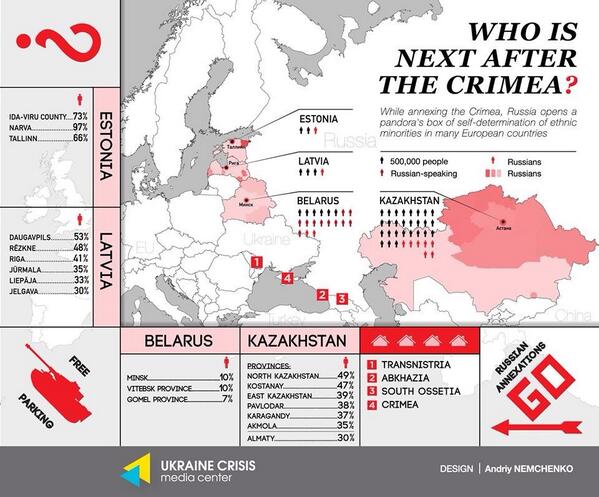 Rebirth of the Russian Empire.
Rebirth of the Russian Empire.
A popular uprising in Ukraine that brought down the government of the pro-Russian president resulted in Russia’s intervention in and annexation of Crimea. Thinly-disguised Russian assistance now enables pro-Russian separatists in eastern Ukraine to continue to battle the new government of President Petro Poroshenko. Russian President Vladimir Putin plays a masterful game of chess with the European Union and with NATO, knowing that he holds the advantage. It is Russian natural gas flowing through pipelines across Ukraine that meets much of Europe’s energy needs. Moreover, Ukraine is at the very edge of the Western European and American spheres of influence. The real question is not whether Putin will become the puppet master over all of Ukraine, but where he will draw the line in his quest to rebuild Russian power. The old Russian Empire of the Tsars included half of Poland and extended to the borders of Romania and Hungary. The borders of the Soviet Union included the current independent states of Ukraine, Belarus, Latvia, Lithuania, and Estonia, and, after World War II, incorporated a large swath of Poland. Moreover, the Soviet Bloc held sway over all of Eastern Europe from the Baltic to the Adriatic, including the former German Democratic Republic (East Germany).
The current Russian expansion does not need to reunite that entire realm under one flag. Moscow has at its disposal economic and cultural tools which, when backed by battle-tested military forces, become potent weapons capable of compelling other nations to submit to Russian domination. Indeed, the Russian empire now taking shape before our eyes is far stronger than either the Tsarist empire or the Soviet empire. The Tsars enjoyed the advantages of skillful diplomacy and centuries of unbroken conquest over the peoples of the east and south, but lacked the economic and technological advantages of the West. The Soviets learned the art of diplomacy and enhanced it with propaganda, the art of manipulating public opinion through distortion of facts, yet they, too, lagged behind the West in economic and technological terms. The reborn Russian empire has no such disadvantages. Russian technology is on par with the West, and the Russian petroleum industry alone provides enough economic clout to compete with any rival. However, Russia is still recovering from a demographic crisis in which the ethnic Russian birthrate fell below that required to maintain its population. At the same time, the birthrate of Russia’s Islamic people groups is on the increase. Russia is not likely to become a Muslim nation in the near future, but two decades of experience with Islamists – particularly Chechens, with their penchant for viciousness – provide ample motivation to reign in potential Muslim extremism in Russia’s southern regions. Russia’s expansion, therefore, is a matter of national security to circumvent the growth of radical Sunni Islam within its borders. That is why Russia has taken steps over the last generation at cultivating relations with Iran and at neutralizing Turkey. These efforts have paid off in an axis of power with Tehran that enables Moscow to project its influence far afield into the once-contested regions of the Middle East. It is Russian weapons, equipment, advisors, and financing that have enabled Bashar al-Assad to remain in power in Syria, and which are even now beginning to intervene in Iraq to save the discredited government of Prime Minister Nouri al-Maliki. How far this power projection shall continue is as yet uncertain, but for it to continue Russia must have unhindered access to and across the Black Sea, the Caucasus, and into the Mediterranean. Consequently, the governments of the Baltic States, Poland, Hungary, Moldova, Romania, and Georgia are rightly concerned that they may well fall under Russian domination once again.
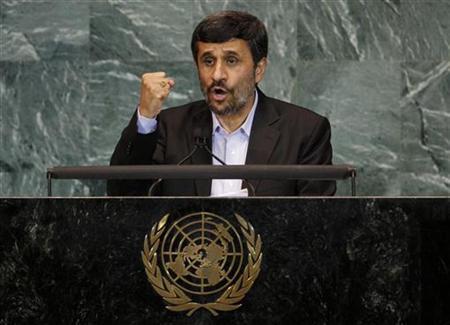
Rebirth of the Persian Empire
Russia’s cooperation with Iran constitutes an odd marriage of convenience. The two nations have been at odds for generations, particularly when the Soviet Union and Great Britain partitioned Iran during World War II to forestall Nazi Germany’s efforts to make inroads in the country. When the Iranian Revolution of 1979 brought a radical Shi’a Muslim regime into power, the atheist Soviet Union faced a potentially insidious threat on its southern frontier. Since the collapse of the USSR, Iran and Russia have found common ground in standing against the West and their Sunni partners. The real power in Iran is the Shi’a religious order, led initially by Ayatollah Ruhollah Khomeini, and now by his successor, Ayatollah Ali Khamenei. With the backing of the Iranian Revolutionary Guards Corps (IRGC), the ayatollahs have created a state based on the Shi’a vision of Islam, and have succeeded in exporting their revolution. There is an apocalyptic component to the Iranian regime’s policies, as the world witnessed during President Mahmoud Ahmadinejad’s (2005-2013) repeated declarations of the imminent arrival of the Mahdi, the world leader whom Muslims expect to arrive at the end of the current world order and usher in an era of total Islamic domination. This Islamic zeal, a demographic crisis of their own (e.g., too many unemployable young people), and a hefty dose of Persian nationalism, have led to Iran’s confrontational policies.
The ayatollahs have based their foreign policy from the beginning on opposition to the “Great Satan” (the United States) and Israel. Since the Iranian regime from the beginning has suffered from crippling economic sanctions and isolation, Tehran has had to find alternative means to build and project power. These means include building Shi’a Islamist resistance organizations like Hezbollah, cooperation with other “rogue states” like North Korea, transnational criminal enterprises to skirt economic sanctions, and unswerving pursuit of nuclear weapons capability. The cumulative effects of these efforts have placed Iran on the cusp of becoming the power broker of the Middle East. With the drawdown of U.S. forces from Iraq in 2011, Iran has begun to exercise considerable influence over the Arab Shi’a population and Prime Minister Maliki’s government. Maliki’s cooperation was essential for Iran’s intervention in the Syrian Civil War, providing troops, equipment, funding, and expertise that have kept President Bashar al-Assad in power. One of Iran’s greatest successes is the creation of Hezbollah. That entity now has a controlling interest in Lebanon, having grown from an indigenous Shi’a terrorist cell to a network of jihadist and transnational criminal enterprises, a political party with a legitimate stake in the Lebanese government, and a conventional army. At Iran’s direction, Hezbollah has contributed significant forces to Syria, where it has boosted the flagging strength of President Assad’s army.
All of this these developments have served to increase Iranian prestige, but they pale in comparison to Tehran’s nuclear ambitions. Even in the face of economic, political, and covert efforts to derail the Iranian nuclear program, the ayatollahs have succeeded in bringing their nation to the threshold of the nuclear club. On November 24, 2013, Iran concluded a Joint Plan of Action with the P5+1 powers (United States, Great Britain, France, Russia, China, and Germany). The agreement essentially marked a capitulation of the Western powers to Iran, leaving the Iranian nuclear infrastructure intact while easing the economic sanctions that have crippled the nation for decades. The JPA specifies a first step of confidence-building measures to be completed within six months of its implementation. That deadline arrives on July 20, 2014, but judging from the record of negotiations thus far, we should not expect any breakthrough, nor any rollback to the Iranian nuclear program. In the meantime, Iran continues to inch closer to nuclear capability, if it has not already achieved that goal.
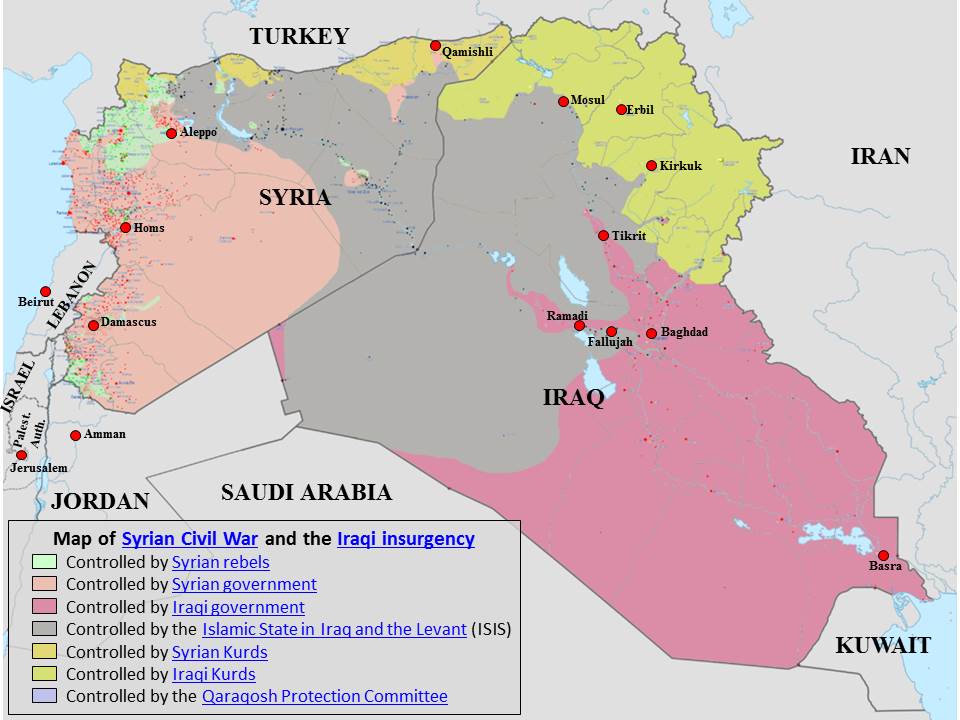
Wikimedia Commons
Death of the Old Middle East
The Iranians seek nuclear weapons so they may threaten Israel with annihilation and project power to Europe and beyond, but they already have the capability to alter the balance of power in the Middle East. That has been abundantly clear in the success of Iran, Russia, and Hezbollah in upholding the regime of Bashar al-Assad in Syria. The Syrian Civil War has erupted far beyond the borders of that beleaguered state, and its repercussions are sure to impact the entire world.
The immediate cause of Syria’s troubles was the Arab Spring. The popular uprisings against entrenched Arab regimes began in Tunisia in December 2010. One month later they had brought down Tunisia’s government and spawned protests in Oman, Yemen, Egypt, Syria, and Morocco. In February, Egyptian ruler Hosni Mubarak resigned, followed shortly thereafter by the onset of a civil war in Libya that would bring down strong man Muammar Gaddafi. Syria’s civil war began in March. In Yemen, President Ali Abdullah Saleh narrowly escaped an assassination attempt in June, and finally relinquished power in February 2012. Other revolts flared up in Bahrain, Jordan, and Kuwait, but the regimes succeeded in hanging on to power, often with help from Saudi Arabia, which was dealing with its own problems from a Shi’a minority and a restless population resentful of the long monopoly of power held by the House of Sa’ud.
The initial shock of the Arab Spring has abated somewhat, but its effects are escalating. The popular uprisings testify to the oppressions of ruling elites placed and maintained in power by the world system that developed from World War I. It began with the borders drawn by Messrs. Sykes and Picot in the agreement they made on behalf of the British and French governments. Those borders created the states of Jordan, Iraq, Syria, Lebanon, and Kuwait, and led to the borders that define Saudi Arabia, Israel, and the Palestinian territories. Before World War II France and Great Britain kept those borders intact through the mandates awarded to them by the League of Nations. Afterward the United States stepped in, concluding agreements with the House of Sa’ud and other ruling elites to keep the oil flowing in return for stability. The Soviet Union played along, always seeking to balance U.S. influence in the Middle East. The result was a regional balance of power in which the rulers directed the frustration and anger of their peoples toward Israel as the means of keeping dissent in check and ensuring the survival of their regimes. At times there was a need for harsher measures, such, and brutal dictators like Hafez al-Assad in Syria, Muammar Gaddafi in Libya, and Saddam Hussein in Iraq, who had no problem ruthlessly eliminating opposition. The rest of the world stepped in as necessary to ensure things did not get out of hand, such as when Israel waged wars of self-preservation in 1956, 1967, and 1973, but for the most part the Arab world was left to its own devices as long as the oil continued to move to the world’s markets. And as long as the oil flowed, it was traded in U.S. dollars, guaranteeing the American economy would remain afloat and continue to serve as the engine of the global economy.
The system began to fall apart when Muslims started to consider alternatives to their situation. Osama bin Laden was a pioneer in this regard, taking jihad to a new level through the 9/11 attacks on the United States. Bin Laden’s Al Qaida touched off a lengthy war on terrorism that saw the U.S. lead the way in upending the balance of power, most notably by removing Saddam Hussein and seeking to bring popular democracy to Iraq and the rest of the Middle East. The election of a terrorist Hamas government in Gaza in 2006 should have demonstrated the dangers of such a policy, but apparently the lesson was lost. For whatever reason, the Obama Administration continued and accelerated the processes begun by the G.W. Bush Administration, paving the way for the Arab Spring and its yet-to-be-determined aftermath.
What has happened already is the irrevocable dismemberment of Syria and Iraq, a fact that the world seems to have realized only with the shocking advances of the Islamic State of Iraq and Syria (ISIS). The ISIS story is evolving even as of this writing. It has also been known as the Islamic State of Iraq and the Levant (ISIL), and as of June 29, 2014, is called the Islamic State (IS). This in itself is a testimony to the irrevocable changes that have occurred in the Middle East. The IS has grown out of an ultra-jihadist branch of Al Qaida which has fought the existing powers in Iraq and Syria since the U.S. invasion of Iraq in 2003. In Syria it has warred as well against other Sunni opposition groups, including other Al Qaida affiliates. Somehow IS has come out ahead, no doubt thanks to its uncompromising hardline Islamist message backed by ruthless application of Sharia (Islamic law) and brutal repression of dissent.
These factors have helped the IS gain control of much of Iraq and Syria, but what made the world take notice was the capture of Mosul, Iraq’s second largest city, on June 9, 2014. Since then IS forces have routed Iraqi government opposition wherever they have met, prompting the government of Prime Minister Maliki to plead for help from Iran, Russia, and the U.S., and to accept help from Shi’a militias such as that led by Ayatollah Muqtada al-Sadr. As IS continues its advance, it becomes more clear that if Maliki survives in power, he will be prime minister only over a rump Iraqi state based on the Shi’a majority areas of the south and east, and only at the sufferance of his Iranian patrons. The U.S. is at an impasse on how to respond, not knowing whether to prop up Maliki, whose policies have led to the alienation of both the Arab Sunni and Kurdish segments of Iraq’s population. Fighting against IS is also a problem for the U.S., which is not willing to return to another lengthy engagement in Iraq where the only real choices of allies are varying degrees of jihadist Shi’a or jihadist Sunnis.
This, too, is the dilemma of Saudi Arabia, which has led the way in arming the opposition against Syria’s Assad. In a way, the Saudis have done their job too well, creating the conditions by which the IS has gained its advantages. Now the Saudis face trouble on their very own borders as IS has turned its attention southward and westward. The monarchies of King Abdullah in Saudi Arabia and King Abdullah II of Jordan both face existential threats as the IS gains momentum. The military and security forces of both nations have proven equal to all challenges thus far, but they face in the IS a transnational jihadist revolution that could topple the regimes from within. For that reason, Jordan has leaned heavily on the U.S. and Israel for help.
As Amman and Riyadh dig in, Baghdad is for the moment safe. There is no need for IS to take Baghdad, with its large Shi’a urban population. So, too, is Kurdistan safe for the moment. If there will be a big winner out of this transition, it is the Kurds. The long dream of a Kurdish state is even now about to be realized. The IS advance on Mosul and the rout of Iraq’s army gave the Kurdistan Regional Government (KRG) an opportunity to take charge of Kirkuk, the ancient Kurdish city at the center of rich oil fields. Kurdish Peshmerga forces have advanced as well into Diyala province and other contested territories vacated by the Iraqis, and are well able to defend their territory against the IS. With the recent commencement of Kurdish oil exports through Turkey, and with over 20 years of autonomy, the Iraqi Kurds are ready to embark on independence. They will likely include their Syrian Kurdish brethren in this adventure. Syria’s Kurds have carved out an autonomous region of their own thanks to the opportunities afforded by the civil war, and they have successfully defended their territory against the IS and other jihadist forces. It is virtually certain that Kurdistan will span what are now the Kurdish regions of Iraq and Syria. Although there are difficulties still to iron out with Turkey, Kurdistan has already entered into a mutually-beneficial relationship with its neighbor to the north. This new country will provide a safe haven for Christians and other refugees form the war-torn regions around them, and will serve as a buffer against what is shaping up to be a Sunni-Shi’a struggle for dominance in the core Middle East.

Rebirth of the Caliphate
Kurdish independence, however, is as of now only the second most significant development out of this massive transition. The greatest development occurred on June 29, 2014, with the establishment of the new Caliphate in Syria and Iraq. This long-awaited event was made possible by the immense success of the IS in carving out a new state. The announcement that Abu Bakr al-Baghdadi is now Caliph Ibrahim has already resulted in pledges of support from Sunni tribes in Iraq and Syria, as well as Hamas and other Palestinians. It remains to be seen whether his claim to be commander Amir al-Mu’minin (Commander of the Faithful) will be widely accepted throughout the Muslim world. Most certainly the Shi’a of Iran, Iraq, Lebanon, and Syria will reject him, as will the Saudis and the Jordanians, seeing that the presence of a caliph threatens their very reason for existence. However, each IS victory adds to momentum, regardless of the atrocities and excesses carried out in territories the Islamic State has “liberated”. The very fact that there is now a caliph who can make a substantial claim to the title for the first time in 90 years is significant beyond words. Moreover, Ibrahim is the first Arab to lay claim to the title since the Ottoman Turks ended the Abbasid Caliphate of Cairo in 1517.
The fact that Ibrahim has succeeded in forging this caliphate has resurrected a long-dead dream in the hearts of Muslims. Even if he does not succeed in perpetuating this dream, someone will. Do not expect the IS to seek recognition from the United Nations, nor establish diplomatic relations with other nations – particularly non-Islamic states. That is the old order the IS and other jihadists intend to destroy. Their vision is not a community of nations working out their differences through peaceful dialogue, but rather a single Islamic overlord demanding and receiving submission from all others. For the moment the IS continues to gain ground, and their momentum will continue for the foreseeable future. It is quite possible, perhaps even likely, that they will bring down the monarchy in Jordan and destabilize the Arabian Peninsula. However, they will come up against a brick wall in Iran, and will suffer significant damage from the Israelis if they make a wrong move too soon.

Dry Bones
Isolation of Israel
Israel has already been drawn into this struggle, and it is only a matter of time before Israeli forces are engaged on multiple fronts. Peace continues to elude Israel and the Palestinian Arabs. The U.S.-brokered peace talks that ended in April 2014 were doomed from the start, irrevocably broken on Palestinian intransigence at accepting the existence of the Jewish state. With the Palestinian Authority (Fatah) seeking UN assistance in obtaining statehood, and with its acceptance of a unity with the terrorist government of Hamas in Gaza, there is currently no common ground for further peace efforts. Israel has endured much provocation through cross-border incidents and rocket attacks from Gaza, Lebanon, and Syria, but it seems that Israel’s patience has at last been stretched to the breaking point with the abduction and murder by Hamas of teenagers Eyal Yifrach, Gilad Shaar, and Naftali Frenkel on June 12. The subsequent murder of Muhammed Abu Khdeir, possibly in revenge for the deaths of the Jewish teens, has sparked Arab riots in Jerusalem and elsewhere in Israel that have yet to see resolution. In the face of it all Israel has arrested hundreds of Palestinian suspects, and has launched airstrikes against Gaza. An invasion of Gaza may be in preparation as Israeli troops take up positions on the border. On the northern borders, Israel has already engaged in air and artillery strikes in response to cross-border attacks and other provocations from Syria and Lebanon.
Israel enters this period of tension increasingly isolated in the international community. The once-certain support from the United States is now questionable, leaving Israel alone to deal with existential threats from a potentially nuclear-armed Iran and from Arab enemies both surrounding the nation and within its borders. The rising tide of anti-Semitism in Europe and elsewhere brings the threat home to Jews the world over and underscores the need for a Jewish state to remain in existence. It was the lack of a Jewish state which contributed materially to Hitler’s success in murdering two thirds of Europe’s Jewish population during World War II. For that reason alone Israel will take whatever measures it deems necessary to survive.
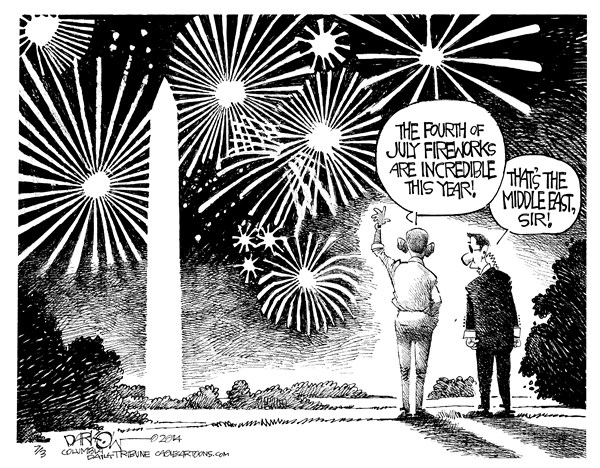 Decline and Fall of the United States and the Western Powers
Decline and Fall of the United States and the Western Powers
In the face of all of this the United States of America has withdrawn on itself, content to enjoy an orgy of bread and circuses while turning a blind eye to the collapse of the world order. The U.S. has walked off the world stage, leaving the bad guys to do as they please. Whether it is war weariness, selfishness, arrogance, ignorance, wishful thinking, or some diabolical design, the result is the same: the lack of U.S. presence has opened the way for all manner of evil. It is because there is no clear U.S. policy that Russia has grown bold, Iran has waxed strong, and the established world order has unraveled. The Arab Spring could not have happened if not for U.S. encouragement of popular revolt and abandonment of old allies. Without U.S. leadership, NATO withers and becomes nothing more than a paper tiger. And without U.S. attention to the existing economic order, nations like Russia, China, and Iran have the incentive and means to begin trading in their own currencies rather than the oil-backed dollar. With the dollar no longer the currency of choice, the U.S. economy will collapse under the weight of unsustainable debt, bringing in its wake worldwide depression and global competition for resources. Already China flexes its muscles against Japan, the Philippines, and Korea, and in South Asia India and Pakistan threaten to reignite their perennial conflict, only this time with nuclear arsenals of their own. On top of that, the ethical and moral standards of millennia fall by the wayside as the world embraces a culture of lawlessness.
Where it will all end is as yet anyone’s guess, but it is certain that the global order born in the struggle of 1914-1918 is now at the end of its life. It appears that the focus of the entire globe this time around will be on the Middle East simply because that is where the world’s energy supply exists. Purely economic and political reasons dictate that the declining West will have to do something to prevent Caliph Ibrahim from taking control of the oil fields, refineries, and ports of the Persian Gulf. Already Iran has intervened in Iraq out of necessity; failure to do so means Tehran will lose its ability to influence Syria, Lebanon, and Gaza. However, it will stretch Iran to the breaking point and put on hold whatever plans exist for Israel. At the same time, the Sunni elements will continue their own struggle for mastery while simultaneously engaging Iran and its allies in the Sunni-Shi’a war now being fought in Iraq and Syria. This multi-faceted struggle is on the same order of magnitude as that which happened on those same grounds 1,000 years ago, when each side bled the other white and opened the way for Crusaders and Mongols to divide the Middle East. Only this time the antagonists have weapons of mass destruction. It is as if the prophecy spoken long ago of Ishmael, father of the Arabs, has come home to roost:
He shall be a wild man; his hand shall be against every man, and every man’s hand against him. And he shall dwell in the presence of all his brethren. (Genesis 16:12 NKJV)
Part IV will continue this series with a discussion of biblical implications of this global transition, seeking to determine where the momentous shifts we now witness place us on the timeline of God’s plan for humanity.
[1] The vote on September 18, 2014, resulted in 55% of Scots choosing to remain united with England, Wales, and Northern Ireland. However, the fact alone that the question of Scottish independence came up for a vote, and that a large minority of Scots voted in favor of it, indicates the seriousness of the question and underscores the point that nothing of human origin is permanent (and certainly no political arrangement, no matter how many centuries it has been in existence). The repercussions of the Scottish Referendum have yet to play out, as noted in George Friedman’s editorial, “The Origins and Implications of the Scottish Referendum”, published by Stratfor.com two days before the vote.
Please click here to return to Part I.
Please click here to return to Part II.
Please click here to continue to Part IV.
Please click here to continue to Part V.
Please click here to continue to Part VI.

